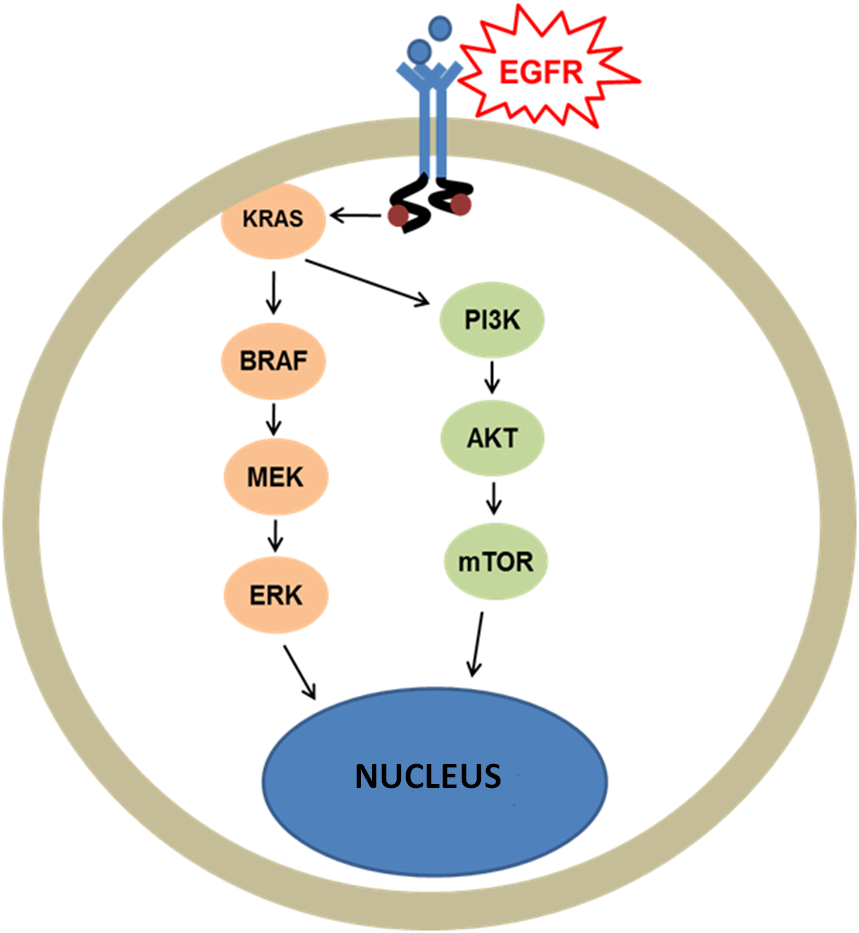EGFR (Epidermal growth factor receptor) is a receptor protein found on the surface of cells. Different small molecules (mainly growth factors) bind to this receptor thus activating it. The activated receptor sends signals into the cell which lead to the activation of genes and, finally, to cell division, cell growth, angiogenesis, and metastasis formation. Several processes can lead to abnormal receptor activation including receptor overproduction, different mutations (mentioned above), and other mechanisms. Abnormal high levels of EGFR can be found on the surface of many types of tumour cells.
Recently, several EGFR inhibitors have been developed that inhibit signalling pathways, improving the survival rates of cancer patients. These medications bind to the EGFR receptor and inactivate it, thus leading to the inhibition of EGFR signalling and halting cell division, metastasis formation, etc. Therefore, the diagnostics of certain regions of the EGFR gene is essential for the selection of an appropriate, efficient tumour therapy. However, these medications are ineffective if a mutation is present in the KRAS, NRAS, BRAF, PIK3CA members of the EGFR signalling pathway.

Analysis of the gene is recommended in cases of non-small cell lung cancer (NSCLC).

